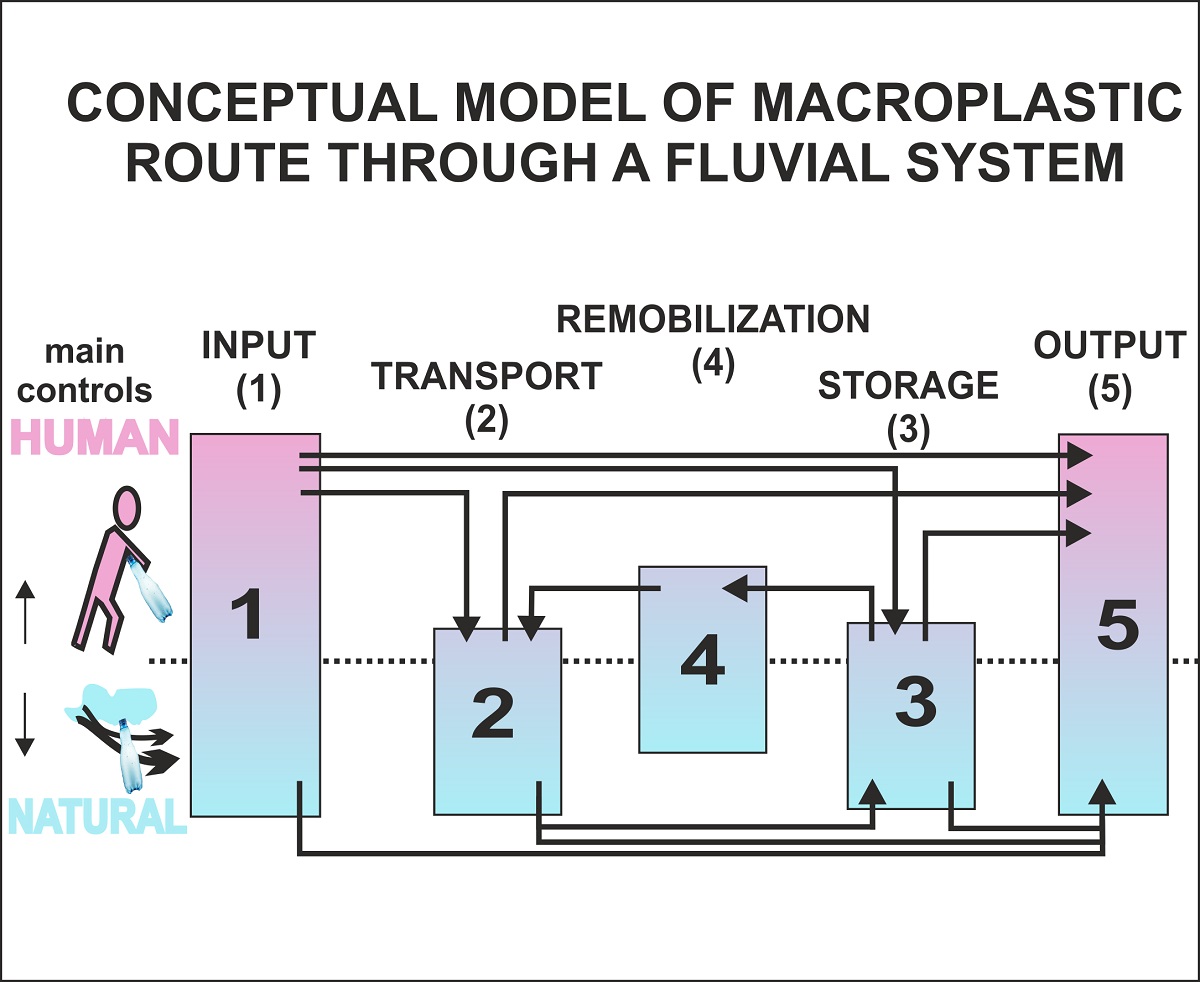Preprint
Concept Paper
Macroplastic Storage and Remobilization in Rivers
Altmetrics
Downloads
338
Views
325
Comments
1
A peer-reviewed article of this preprint also exists.
This version is not peer-reviewed
Submitted:
13 July 2020
Posted:
15 July 2020
You are already at the latest version
Alerts
Abstract
The paper presents a conceptual model of the route of macroplastic debris (5 > mm) through a fluvial system, which can support future works on the overlooked processes of macroplastic storage and remobilization in rivers. We divided the macroplastic route into (1) input, (2) transport, (3) storage, (4) remobilization and (5) output phases. Phase 1 is mainly controlled by humans, phases 2–4 by fluvial processes, and phase 5 by both types of controls. We hypothesize that natural characteristics of fluvial systems and their modification by dam reservoirs and flood embankments construction are key controls on macroplastic storage and remobilization in rivers. The zone of macroplastic storage can be defined as a river floodplain inundated since the beginning of widespread disposal of plastic waste to the environment in the 1960s and remobilization zone as a part of the storage zone influenced by floodwaters and bank erosion. The amount of macroplastic in both zones can be estimated using data on the abundance of surface- and subsurface-stored macroplastic and the lateral and vertical extent of the zones. Our model creates the framework for estimation of how much plastic has accumulated in rivers and will be present in future riverscapes.

Keywords:
Subject: Environmental and Earth Sciences - Environmental Science
Copyright: This open access article is published under a Creative Commons CC BY 4.0 license, which permit the free download, distribution, and reuse, provided that the author and preprint are cited in any reuse.
MDPI Initiatives
Important Links
© 2024 MDPI (Basel, Switzerland) unless otherwise stated







